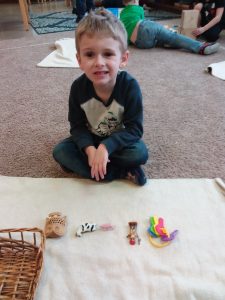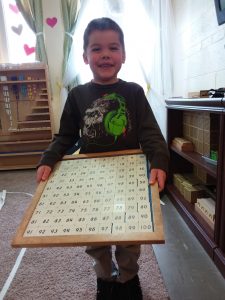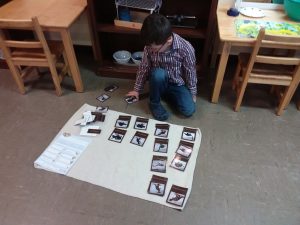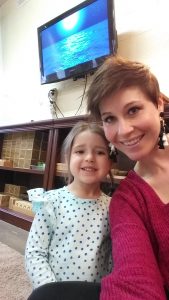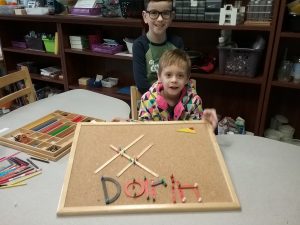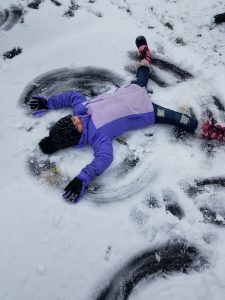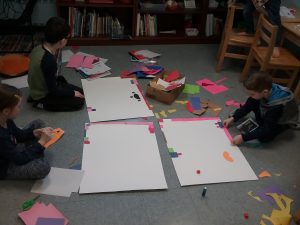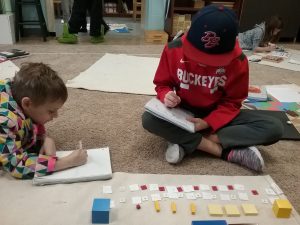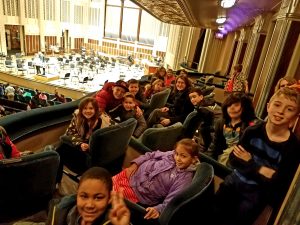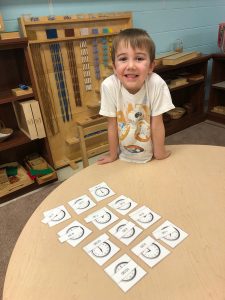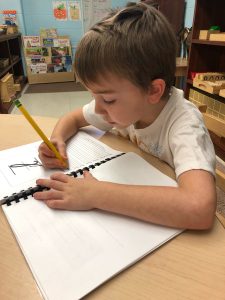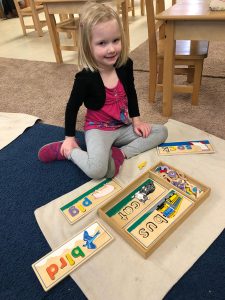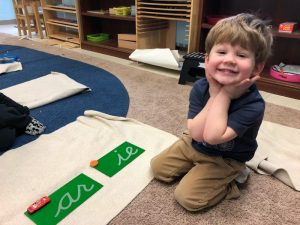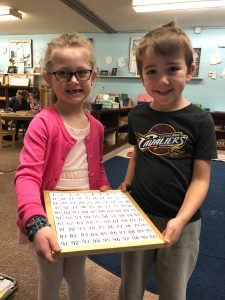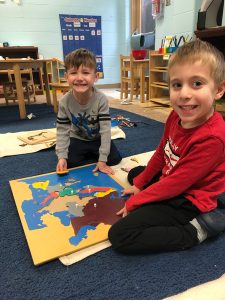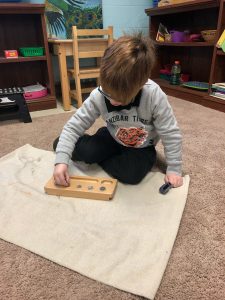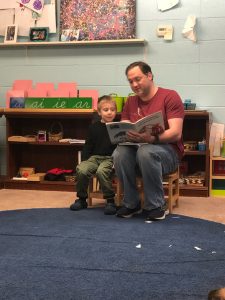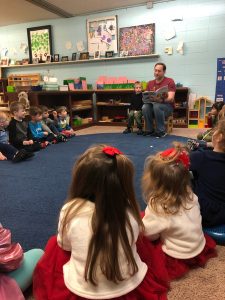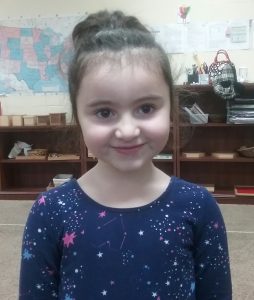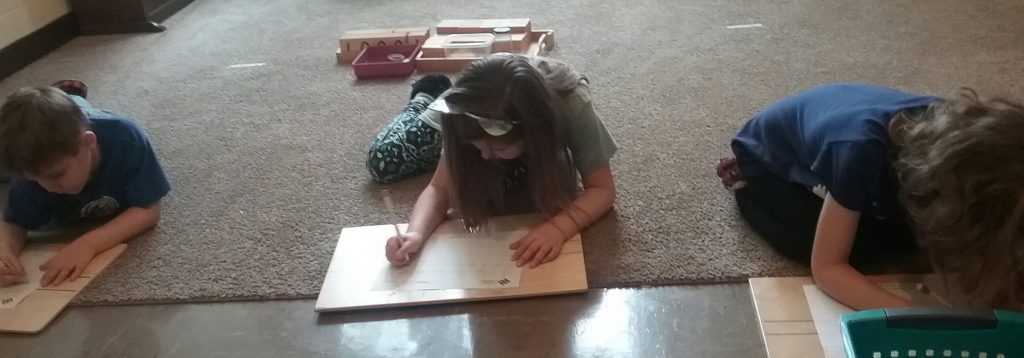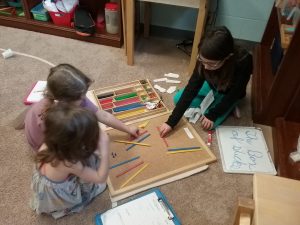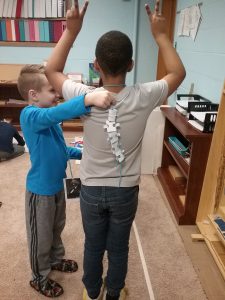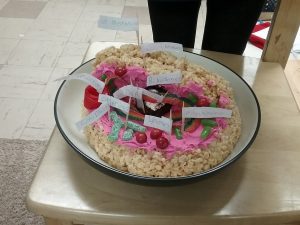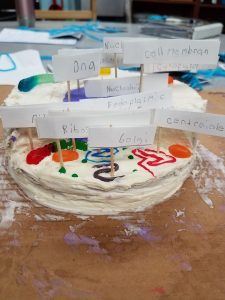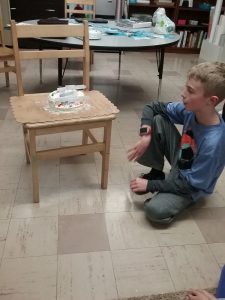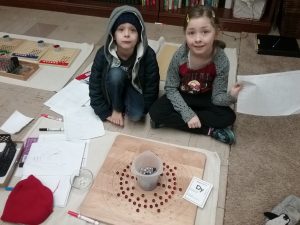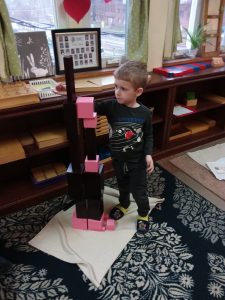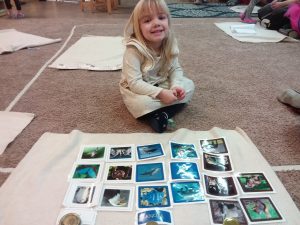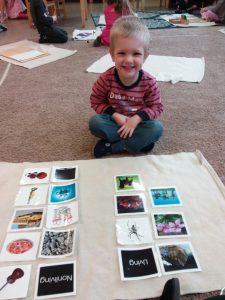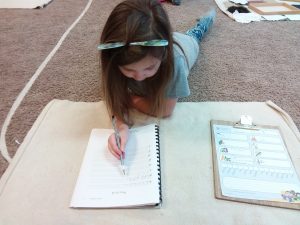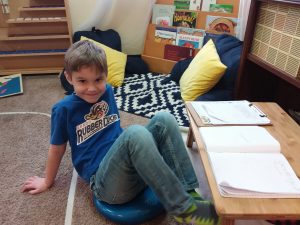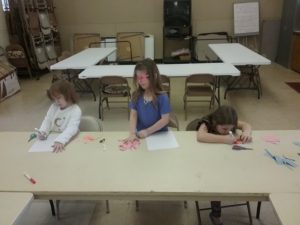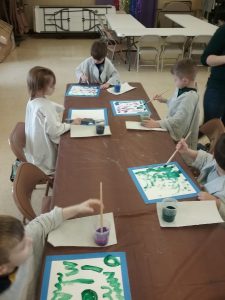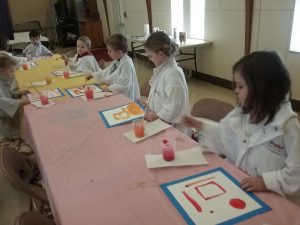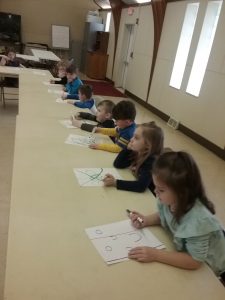The group listened to a story called Screen of Frogs. It was about a lazy, rich, man who refused to work. He bought many things with his money and ended up having a lot of debts. The man was going to sell his land and mountainside to pay off his debts. While he was measuring his land, Koji got tired and fell asleep. He was suddenly awoken by a large green frog dressed in weeds. The frog pleaded with Koji to not sell his land so that the animals don’t go homeless. The man decides to keep his land and work in order to pay back his debts.
The kindergartners participated in interpretive and evaluative activities to aide in comprehension. They wrote down what they were wondering about while listening to the story, drew what Koji was thinking about when the frog talks to him, drew Koji’s land, and whether they would sell the screen if frogs or not.
These students are sharing their drawings of what they think Koji’s land looks like:
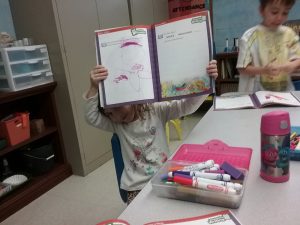
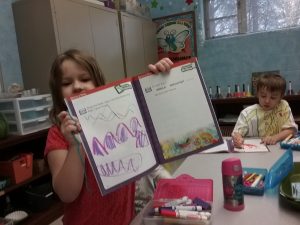
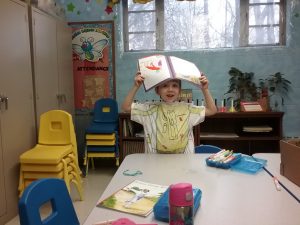
A Peek Into the Next Two Weeks
-the students will listen to a story about a girl who gets to run an errand o her own for the first time.
-the students will learn the vocabulary words: stumbled, examined, and nudged
-the students will participate in discussions and evaluative activities.

